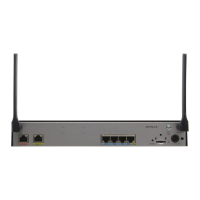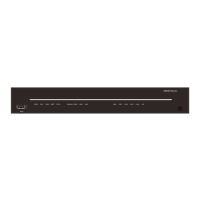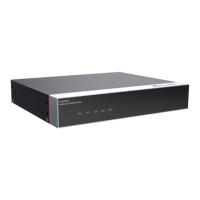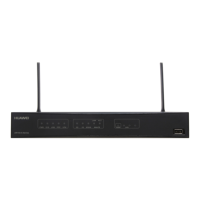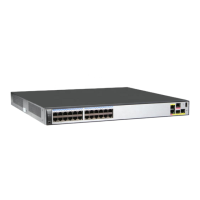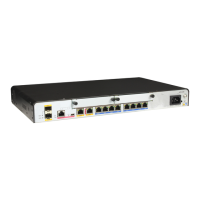The MP group interface view is displayed.
4. Run:
link-protocol ppp
PPP is enabled on the interface.
l Add an FR interface to a bridge group.
1. Run:
fr dlci dlci
A frame relay DLCI is created.
2. Run:
bridge bridge-id
The FR interface to the bridge group.
3. Run:
fr map bridge dlci-number broadcast
A mapping between the frame relay DLCI and the bridge group is configured.
l Add an ATM interface to a bridge group.
1. Run:
bridge bridge-id
The ATM interface is added to the bridge group.
2. Run:
pvc { { pvc-name [ vpi/vci ] | vpi/vci } | { start-vpi/start-vci end-vpi/end-
vci } }
A specified PVC is configured to send and receive bridge packets.
3. Run:
map bridge broadcast
A mapping between the ATM PVC and the bridge group is configured.
A maximum of 20 interfaces can be added to a bridge group. Different types of interfaces can
be added to the same bridge group. Layer 2 interfaces cannot be added to a bridge group.
To add an MFR interface to a bridge group, ensure that the FR interfaces bound to the MFR
interface have the same bandwidth; otherwise, packet loss may occur.
----End
2.6.5 Configuring a Bridge-if Interface for a Bridge Group
LANs on different network segments can communicate with each other by using a Bridge-if
interface.
Context
A Bridge-if interface is a virtual routed interface.
Interfaces in a bridge group can only bridge protocol packets within the bridge group. To allow
LANs on different network segments to communicate with each other, create a Bridge-if
interface for the bridge group to route the communication data.
Procedure
Step 1 Run:
system-view
Huawei AR3200 Series Enterprise Routers
Configuration Guide - LAN 2 Transparent Bridging Configuration
Issue 02 (2012-03-30) Huawei Proprietary and Confidential
Copyright © Huawei Technologies Co., Ltd.
57

